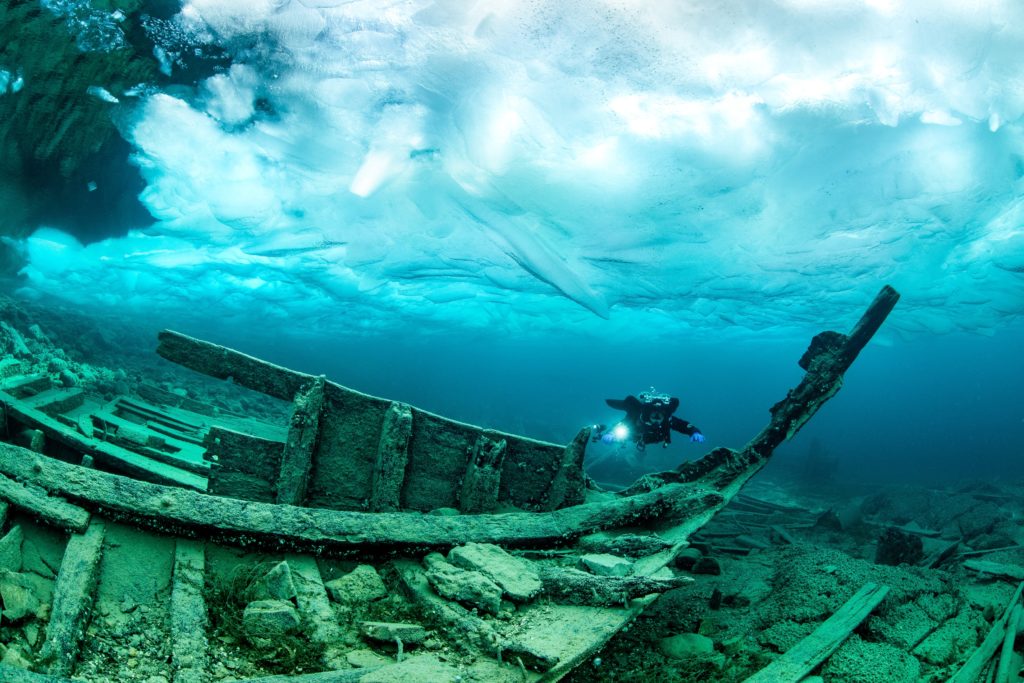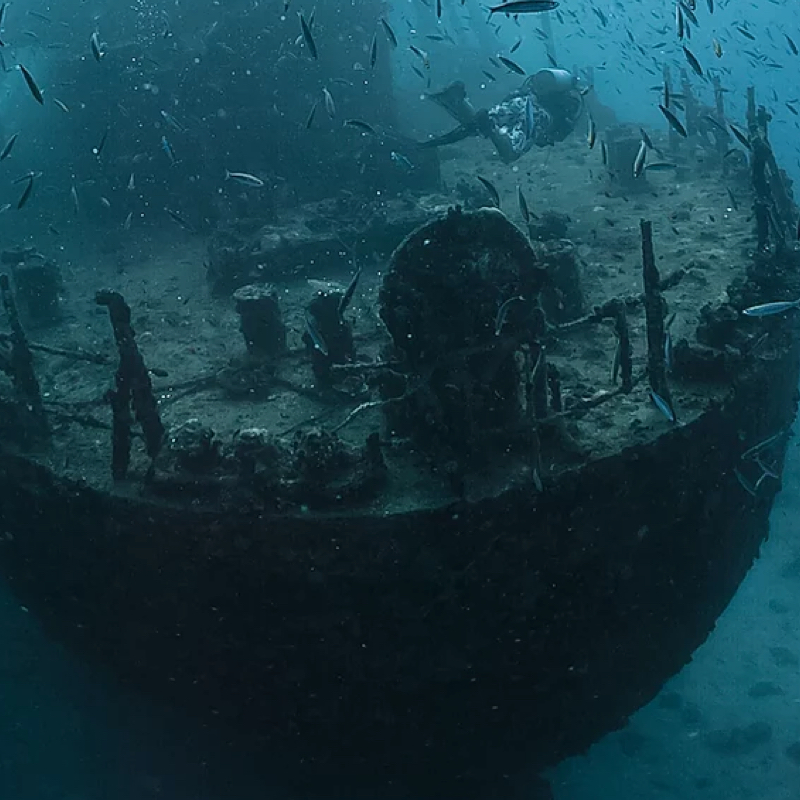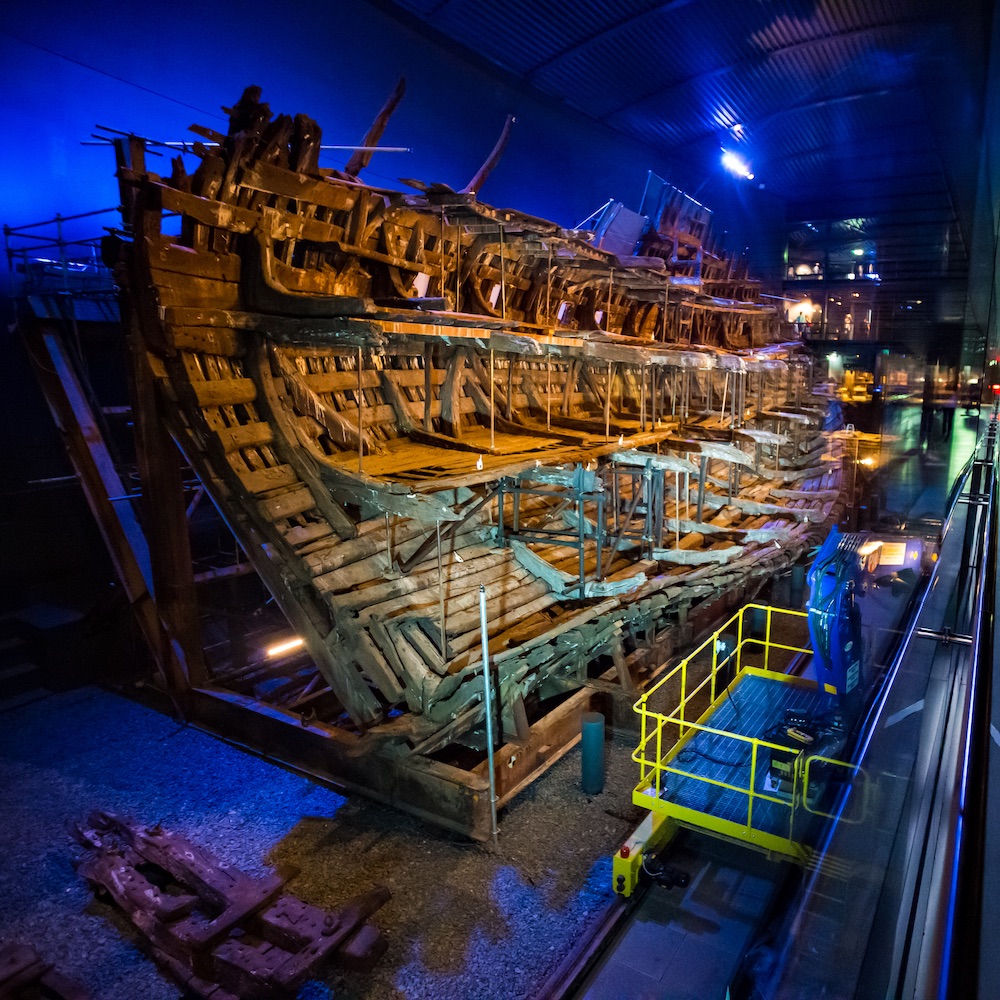Beneath The Surface
Celebrate the Festival of Archaeology this July and become inspired to find your own piece of history beneath your feet
 Walking on a beach on the day after a storm, when the sand has shifted and the shapes of previously unseen rocks emerge on the surface where only a day before there was nothing but soft sediment, it is easy to imagine what else might be buried beneath your feet, just waiting to be found.
Walking on a beach on the day after a storm, when the sand has shifted and the shapes of previously unseen rocks emerge on the surface where only a day before there was nothing but soft sediment, it is easy to imagine what else might be buried beneath your feet, just waiting to be found.
The same is true when you are underwater, looking for a glimpse, perhaps just a hint of the remains of a vessel that hundreds of years ago fell from above you and came to rest on the seabed. When the silhouette of what has been left behind begins to emerge from the dark gloom ahead of you, the feeling can be one of relief followed by excitement at having found that which was previously lost, just as you would feel when you spot a glint of gold shimmering in the sand on the beach.
These are just some of the first steps of archaeology, whether it is an accidental find or something that was deliberately researched and looked for, the moment at which something from the past is found is the moment when its journey changes course and the hard work begins.
When finding that gold coin on the beach, for example you will, in most circumstances, be required to report it as treasure and then it will go through the process of being studied, analysed and valued by experts to learn as much as possible about its history.
Finding a shipwreck on the other hand kickstarts the process of deciding what to do with it. Do you leave it where it is, exposed to the forces of the sea? Do you undertake a survey of the wreck to record its details so that we can learn more about it? Or do you consider bringing that ship back to the surface and recover its artefacts for the world to see?
Is it dry yet?
 Perhaps the most famous of shipwrecks that was subjected to a full archaeological investigation and excavation was the Mary Rose. Today the remains of the ship sit in a purpose made museum in Portsmouth where visitors can see the wooden remains of the ship alongside the countless artefacts and treasures recovered, however it was a long journey to get to that point.
Perhaps the most famous of shipwrecks that was subjected to a full archaeological investigation and excavation was the Mary Rose. Today the remains of the ship sit in a purpose made museum in Portsmouth where visitors can see the wooden remains of the ship alongside the countless artefacts and treasures recovered, however it was a long journey to get to that point.
Rediscovered in 1971, it took 11 years of painstaking archaeological work before the Mary Rose was, in 1982, lifted out of the water and exposed to the air for the first time on over 400 years. The work was not completed there however, as the timbers were then continually sprayed with water and then a chemical solution for 19 years until the wood was stable enough to be displayed in a dry environment again.
That this much time and investment was put into the salvage and preservation of a single shipwreck shows just how much the discovery of a lost ship can excite people and fascinate everybody – 60 million people worldwide watched the raising of the Mary Rose – and the archaeology that follows allows millions of people to engage with their stories for decades afterwards.
From diving on the seabed, snorkelling around a cove and exploring a nearby beach, anybody can get involved in maritime archaeology and as the recent discovery of the shipwreck of HMS Gloucester shows, the next Mary Rose is still out there, just waiting to be found.
What are you waiting for?
